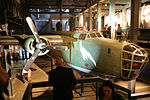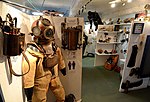Michler's Palace
19th-century architectureBuildings and structures in Poland destroyed during World War IIPalaces in WarsawWarsaw Uprising

Michler's Palace or Michla's Palace (Polish: Pałacyk Michlera) was a townhouse in Warsaw located at Wolska Street no 40 in the Wola district. It was constructed in the late 19th century and destroyed during the Warsaw Uprising in 1944. It is known for an eponymous wartime song, Pałacyk Michla, which was written by poet and insurgent Józef Szczepański.
Excerpt from the Wikipedia article Michler's Palace (License: CC BY-SA 3.0, Authors, Images).Michler's Palace
Wolska, Warsaw Wola (Warsaw)
Geographical coordinates (GPS) Address Nearby Places Show on map
Geographical coordinates (GPS)
| Latitude | Longitude |
|---|---|
| N 52.234555555556 ° | E 20.970472222222 ° |
Address
Kamień upamiętniający walki o Pałacyk Michlera i Młyny 5 sierpnia 1944
Wolska
01-187 Warsaw, Wola (Warsaw)
Masovian Voivodeship, Poland
Open on Google Maps










